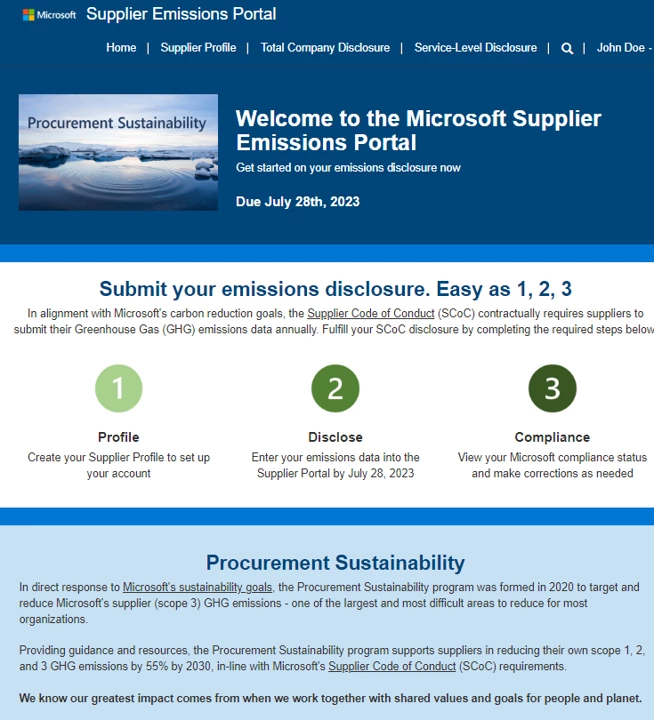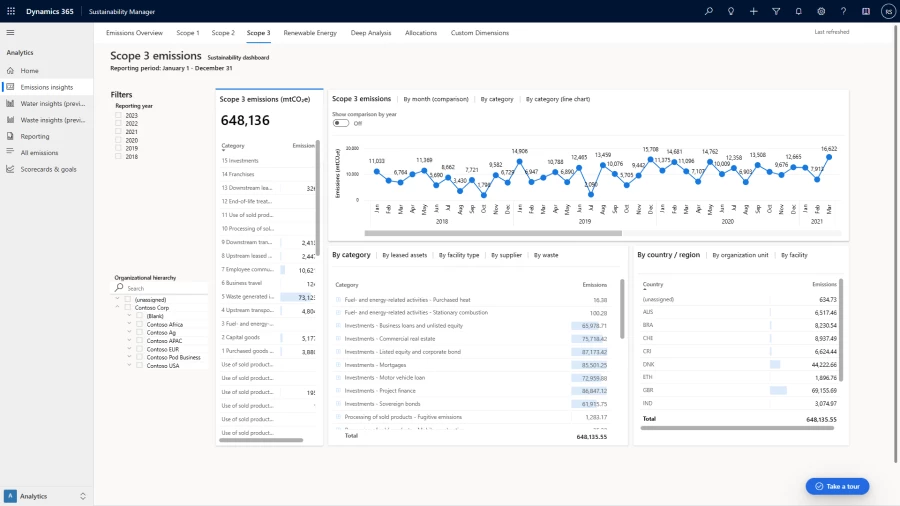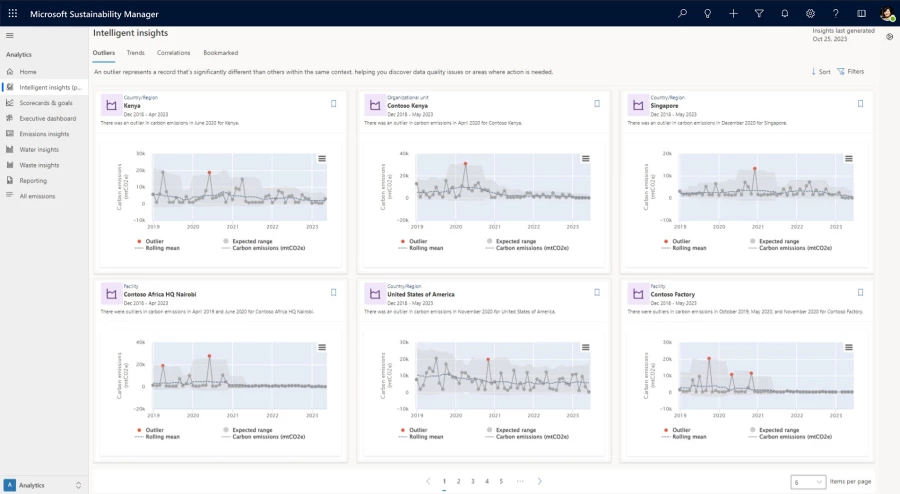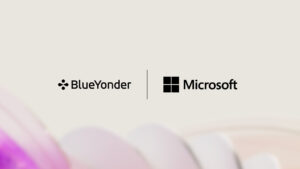
Microsoft as sustainability customer zero: Managing Scope 3 emissions
This is part two in a series about how we’re using our own technology solutions to help accelerate global sustainability progress. Read part one here.
Today’s organizations are at a crossroads. Faced with growing pressure to meet sustainability expectations from customers and stakeholders along with emerging reporting requirements, business leaders are increasingly recognizing the need to transform versus simply carrying on with “business as usual.”
At Microsoft, we see this shift as a positive development for our planet’s future.
For our own part, we’ve taken a systematic approach to embedding environmental, social, and governance (ESG) considerations into our business for years, and we’re now working to enable other organizations to do the same. Not only do we use our own data solutions to help us measure progress toward our environmental sustainability targets, but we’re engaging with our value chain providers to help further reduce our emissions.
The reality is that our company cannot attain our ambitious carbon negative targets without the help of our value chain partners and suppliers. We estimate that 75% or more of our total carbon footprint comes from Scope 3 emissions, defined as emissions that are not produced by the company itself, that indirectly accrue up and down the value chain from other organizations as they do business with us. A sizable amount of our total carbon footprint comes from Scope 3 emissions, which is why our Scope 3 commitment is our most powerful opportunity to help accelerate global decarbonization efforts by engaging suppliers and customers in our value chain and partnering to reduce emissions associated with the business we do together.
Microsoft as sustainability customer zero: Using data to drive progress
Read part oneIn this second part of our Customer Zero blog series, we share some of the challenges and successes we’ve faced in this effort—from how we’ve used technology to advance our Scope 3 progress to how we’ve engaged with our suppliers to drive their own accountability and progress.

Microsoft Indirect Procurement spearheads new ESG value chain solution
The Microsoft Procurement organization manages thousands of indirect (services-based) suppliers globally. After announcing our carbon negative ambition in 2020, we examined our Scope 3 emissions and added language to our Supplier Code of Conduct requiring an annual carbon emissions disclosure. Since then, we’ve partnered with our suppliers to educate them on carbon accounting, increase the quality of data, and drive emission reduction progress for services delivered to Microsoft.
Identifying where our largest Scope 3 reduction opportunities exist—and how to take action—requires access to granular emissions data. When considering how to collect more detailed data from suppliers, it quickly became clear that existing products were unable to meet our needs. The biggest issue was that our previous platform did not allow us to customize the questions we asked suppliers.
Instead of trying to make a third-party solution fit our needs, Microsoft Procurement partnered with engineering teams within Microsoft to develop “built-for-purpose” solutions. Top of mind for Microsoft Procurement was a simple tool that was more collaborative, featured flexible reporting, and would better support suppliers.

This collaborative team worked together to add new capabilities within Microsoft Sustainability Manager, including:
- A streamlined emissions survey process in which questions can be customized for suppliers, giving the procurement team the flexibility to add, remove, or adjust questions as regulations and methodologies evolve.
- Self-service features already built into Sustainability Manager that enable suppliers to easily edit their emissions data in real-time, view their customer specific compliance status (including reasons for non-compliance), and resolve non-compliance issues to improve the quality of emissions data.
- Low-code development and home page customization, which means that Microsoft Procurement can easily create a supplier landing page specific to its program, including a central page for supplier resources, support, and an overview of supplier sustainability requirements.
- A connection to Power BI, where sustainability decisions and program progress are measured by turning our supplier emissions data into visual insights and analytics, refreshed in real time as supplier emissions data is updated, beyond the out-of-the-box reports that Sustainability Manager supports.

These innovative technologies are now available to our customers in the new ESG value chain solution in Sustainability Manager, now in preview. Suppliers that participated in the Microsoft Procurement sustainability program were early testers of the ESG value chain solution, where their feedback helped influence this early version.
PureRed, a Microsoft supplier, provided early testing of the capability before being released across Microsoft’s supplier population.
“We were thrilled to participate in the Microsoft Cloud for Sustainability pilot program, allowing us to engage in effective ways to track and reduce environmental impact. This platform is lighter to manage, with concise questions and fewer modules than other industry references, making the disclosure process more intuitive. As a global remote company, we challenged ourselves to thoroughly understand our GhG [greenhouse gases] emissions and Microsoft was a fantastic partner to streamline and validate our results.”
—Natalia Sánchez Herrera, managing sustainability at PureRed
Outcomes and lessons learned
Microsoft’s journey towards achieving our ambitious Scope 3 carbon emissions reduction goals has been a learning experience and will only continue to evolve as regulations are updated and methodologies change.
In this process, we’re once again reminded of the importance of managing data. Microsoft is aligning with the Microsoft Cloud for Sustainability data model. Using data collected and transformed within Sustainability Manager, Microsoft has extended our own solution to further analyze supplier sustainability information. As a result, Microsoft Procurement can collect and analyze supplier emission information to glean valuable insights related to outliers, trends, and correlations. In addition, reporting and goal alignment enhancements being made in Sustainability Manager will help procurement teams collect all 15 carbon scopes for emissions, water, and waste data.

Whatever success we’ve achieved is due to embedding sustainability into our culture. The Procurement team had early access to innovative solutions and the ability to influence product development. All this is enabled by a corporate culture that models leadership and empowers people to make the changes they need. Our sustainability journey is an ongoing process, and we are excited to be creating innovative technology solutions for our suppliers and customers that will continue to evolve.




